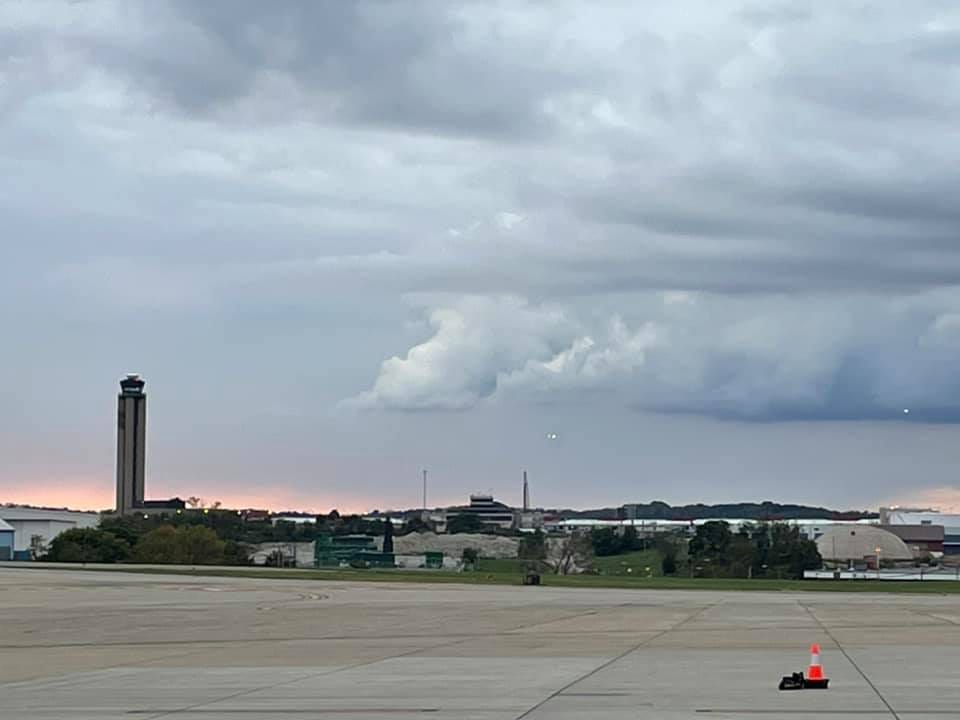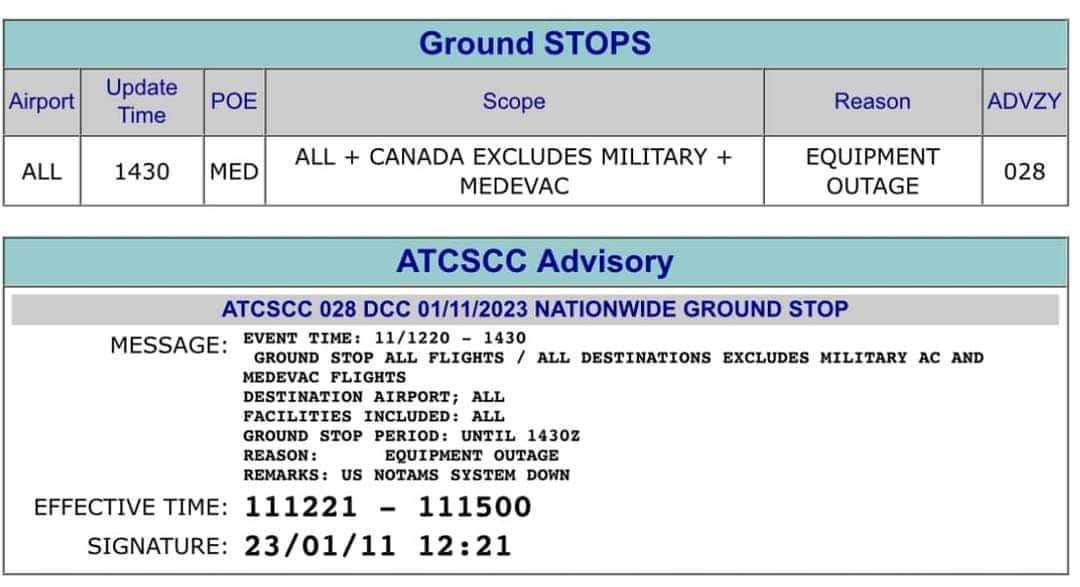I didn’t think I’d have a chance to write today. I was supposed to be flying.
I got to the airport early this morning and we prepped the airplane. As is our normal procedure, I contacted the local air traffic control and picked up our departure clearance prior to the arrival of the passengers. So far, so good.
When our passengers arrived, we started the engines and taxied out, only to find ourselves victims of today’s nationwide ground stop.
“Right after you called,” the controller told us, “we got a message that said there is a total nationwide ground stop. I haven’t seen anything like this in 20 years.”
He went on to say that there would be an update at 9:30 am local time, about two hours away at that point, but that he didn’t know if flights would be released then or if the ground stop would be extended.
We returned to our hangar and discussed the situation with our passengers. As part of a corporate flight department, our passengers often have somewhat flexible schedules and ours ended up canceling the trips for the day, but airline schedules have been thrown into chaos. It may take the rest of the day for the airlines to catch up.
So what happened?
A ground stop is just what it sounds like. ATC holds aircraft, particularly flights on instrument flight plans, on the ground rather than letting them take off. Airlines and corporate jets use IFR (instrument flight rules) flight plans almost exclusively, even when the weather is nice because they allow for more efficient handling through controlled airspace and are required for flights above 18,000 feet.
Local ground stops are not uncommon. In most cases, they are related to weather issues that might temporarily cause airports to be unable to accept arrivals and/or departures. Sometimes they are caused by an excessive volume of aircraft. This can happen during special events and isn’t unusual for Florida in the winter when a lot of airplanes are competing for a limited amount of airspace.
Today’s ground stop was a national one, however. That is extremely rare. In fact, the only nationwide ground stop that I have ever heard of was the one that followed the terrorist attacks on September 11, 2001.
The ground stop was reportedly caused by problems with an FAA computer that processes NOTAMs. “NOTAM” is the term for Notices to Air Missions (formerly Notices to Airmen but several years ago the Biden Administration changed it to a gender-neutral term in one of its more inane actions). NOTAMs are notices that could affect a flight. These range from notifications about runway closures to alerts about cranes (the big mechanical ones, not the birds) in the vicinity of airports to outages of lights on obstructions.
Pilots are required to check NOTAMs before flight to determine whether any of these notifications would affect the safety of their flight. Although we were able to see the NOTAMs that pertained to our flight this morning, the FAA apparently decided to shut down flights nationwide out of an abundance of caution. The failure of the computer may have prevented NOTAMs from being disseminated to some sources, but it definitely prevented new NOTAMs from being issued. This could affect the safety of some flights.
Although there was some speculation that the outage might have been due to hackers, the White House said that there was no evidence that the problem was related to a cyber attack. It is more likely that the problem is a result of either an antiquated computer system or a software bug. Similar problems have caused flight delays in the past but not on a nationwide scale.
The irony is that the vast majority of NOTAMs are viewed as nuisance items by most pilots. At large airports, the sheer number of NOTAMs can be overwhelming and most of these items are required to be listed by the FAA bureaucracy but don’t really affect the majority of flights.
For example, a large metropolitan airport can have pages and pages of NOTAMs for items like cranes and lights on towers that are out of service. These nuisance NOTAMs can be so numerous that it can be easy to miss important items like runway closures and Temporary Flight Restrictions (TFRs) that can often pop up quickly in the post-9/11 world.
Back in 2010, Senator James Inhofe (R-Okla.) got into trouble related to the antiquated NOTAM system. Inhofe, who just left office last week, was also a pilot. After a flight to Cameron County, Texas, Inhofe landed on a closed runway, frightening several airport employees who were working on the runway at the time. He apparently either did not check the NOTAMs prior to his flight or didn’t check them closely enough. Inhofe introduced a bill to update the NOTAM system after that incident (although the big yellow x on the runway should have also been a clue that he should not have landed there), but 13 years later we still have similar problems.
Today’s computer outage was a tremendous inconvenience across the country, but it masks a more serious and systemic problem with the NOTAM system. Even though the computers are back online, pilots are still inundated with reams of mostly useless information about every flight. But that information still has to be carefully checked to find the nuggets of critical safety information in the mounds of worthless garbage that is the notifications that read like these:
KATL 01/122 ATL OBST TOWER LGT (ASR 1020081) 333739.40N0841740.60W (6.7NM E ATL) 1195.2FT (284.1FT AGL) U/S (Unserviceable) 2301062352-2301210500
[This one warns about inoperate lights on a tower near Atlanta.]
KATL 12/277 ATL OBST CRANE (ASN 2021-ASO-1859-NRA) 333742N0842520W (0.6NM SSE ATL) 1139FT (160FT AGL) FLAGGED AND LGTD 2212131437-2301142300
[This one warns about a construction crane.]
KATL 12/458 ATL AD AP BIRD ACT INCREASED 2212301807-2301312359
[This one warns about increased bird activity, which may or may not include avian cranes.]
So, thanks to the FAA, I’ve got the day off, but I’ll have to get up early tomorrow to salvage the back end of the trip that was supposed to start today. At least I’ll be able to rest assured that if someone suddenly erects a crane alongside the runway, I’ll know about it.


No comments:
Post a Comment